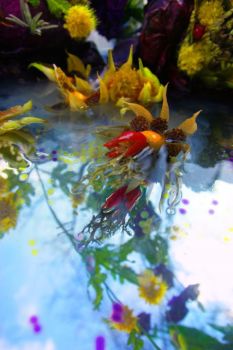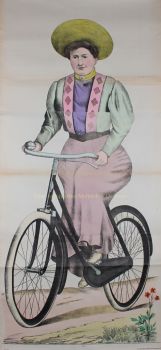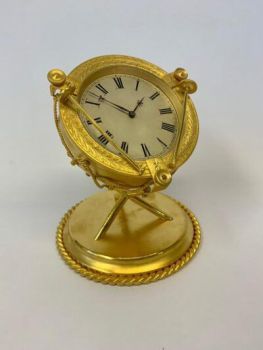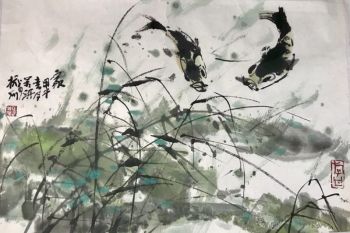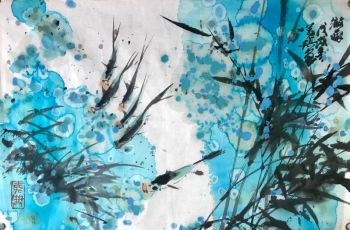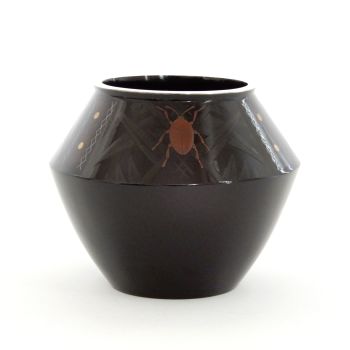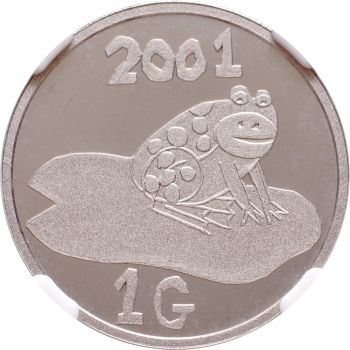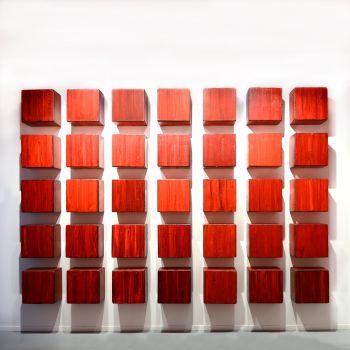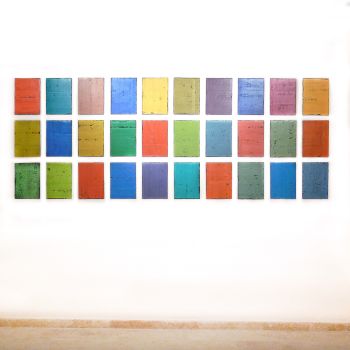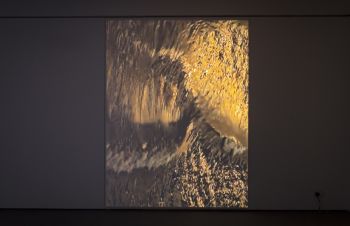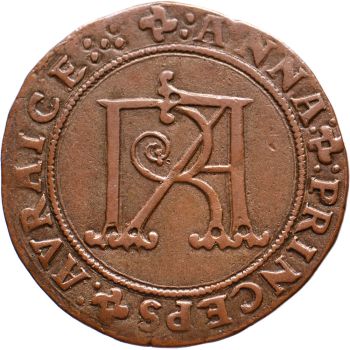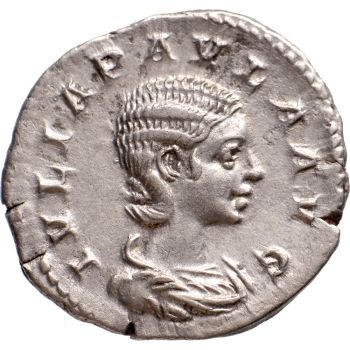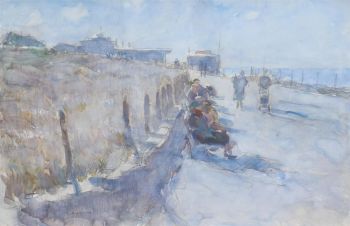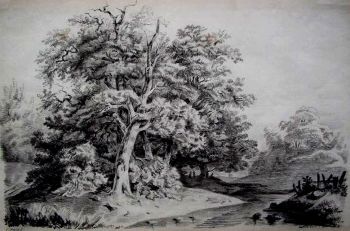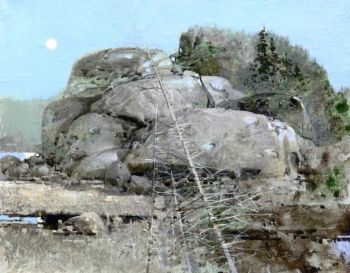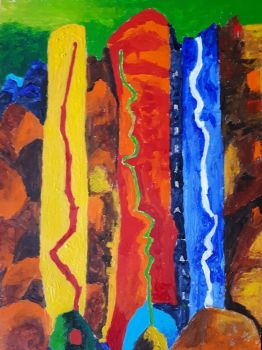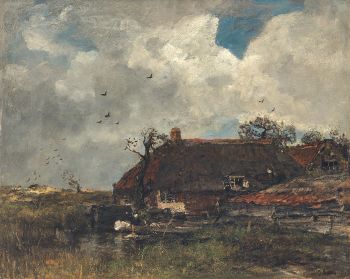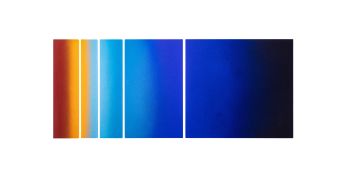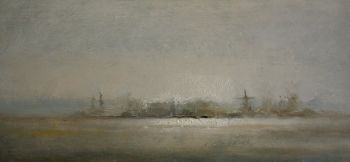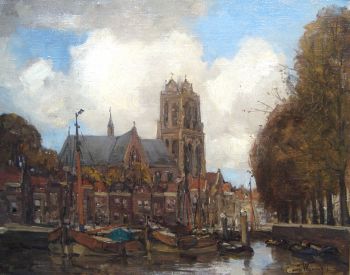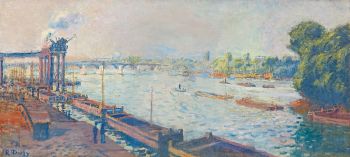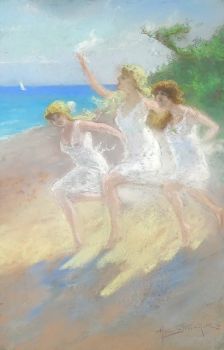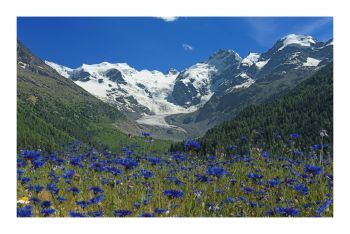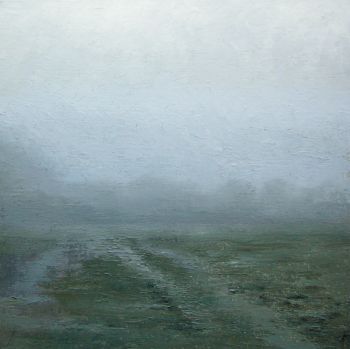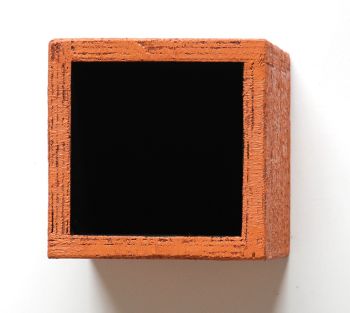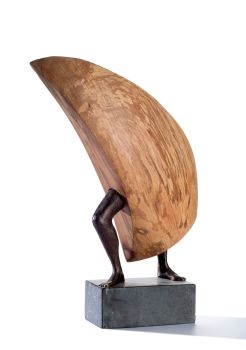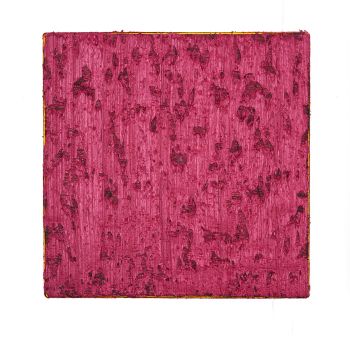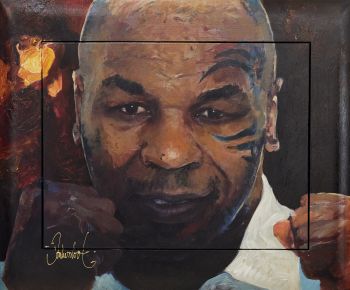Pair of Japanese Lacquered Plates 1700 - 1710
Onbekende Kunstenaar
HoutLak
ø 27 cm
Momenteel niet beschikbaar via Gallerease
- Over kunstwerkThese plates probably were part of a laquer service of the kind that was made to order in the early 18th century for the European market.
The shape of the plate with the typical low wide rim with a slightly raise edge is derived from the model of a Dutch pewter diner plate.
The decoration of the center plane is slightly tactile (Maki-technique) en depicts an Oriental landscape with buildings and trees.
The decoration of the rim consists of ‘Karakusa-motives’ and stylized Chrysanthemums (Kiku-motive). The difference in the lacquer of the two plates is remarkable and suggests the work of different artists, both with their own interpretation of the motives.
After the large commissions for lacquer furniture by the Dutch in the 17th century the interest for these large objects faded, arguably due to the high cost. The interest for lacquer artifacts, however, continued but it shifted to objects like plates, bowls, mugs, teapots and coffeepots. Because of the ample demand for tableware from 1700 onwards, the artists turned to ‘serial production’ of these types of objects for foreign markets. Tableware was typically decorated with similar decorations. The decorations were akin to the “Pictorial style” of the late 17th century, though simpler and, until about 1785, always with Oriental motives.
This Japanese lacquer tableware competed in the highest segments of the European market with porcelain. The Oriental lacquer objects were seen as the more rare and desirable, thus enhancing the status of the owner.
The motives:
When the demand for lacquer tableware increased in the early 18th century the artists based their decorations mainly on designs found on Arita porcelain; Landscapes with houses and trees, flowery sprigs (Karakusa) and flowermotives like Chrysanthemum (Kiku).
The technique:
Sometimes copper was used as base for lacquer work, like in plaques, but wood was most commonly used to work with. For furniture Hinoki (Cypress) and sometimes Sugi (Cryptomeria Japonica) was the usual choice. Turned wooden objects like plates and bowls were commonly made of Kaeki (Zelkova serrate, a type of elm), because it can be made very thin and light. A Kaeki bowl before it is lacquered weighs no more than 8 grams. The objects are varnished with many coats of the concentrated resin of the varnish tree (Rhus verniciflua). After every coat of varnish the object is dried in a dust free room with a humidity of more than 80% and subsequently polished.
Relief is achieved by mixing lime into the first layers of varnish on those places that need to be raised. The color is provided by pigments. The technique were gold dust or foil is applied to the still wet lacquer is called Makie. The gold more or less sinks into the layer of lacquer and is polished once the object has dried. The work is finished with a transparent coat of varnish that again is polished to a shine. To emphasize the gold decorations, they were applied to hiramakie (bas relief) and even to takamakie (raised relief). For the Dutch export market the decorations were mainly applied to black backgrounds.
The “Pictorial style” in Japanese lacquer work is applied from roughly 1630 onwards. Starting from about 1650 the style develops; the double edged cartouches surrounding the depictions gradually disappear. Around 1680 the style has matured to the point, where the images appear unframed on the objects. Most of these objects are made in Makie technique with gold on black. - Over kunstenaar
Het kan voorkomen dat een kunstenaar of maker onbekend is.
Voor sommige werken is het niet te bepalen door wie het gemaakt is of dat het is gemaakt door (een groep) ambachtslieden. Voorbeelden zijn beelden uit de Oudheid, meubels, spiegels of handtekeningen die vaak niet duidelijk of leesbaar zijn. Maar ook sommige werken zijn helemaal niet gesigneerd.
Ook kunt u de volgende beschrijving vinden:
•"Toegeschreven aan …." waarschijnlijk een werk van de kunstenaar maar niet zeker of gedeeltelijk
•“Atelier van ….” of werkplaats van” een werk uitgevoerd in het atelier of atelier van de kunstenaar, eventueel onder zijn toezicht
•“Cirkel van ….” een werk uit de periode van de kunstenaar die zijn invloed laat zien, nauw verbonden met de kunstenaar maar niet noodzakelijkerwijs zijn leerling
•“Stijl van ….” of “Volger van ….” een werk uitgevoerd in de stijl van de kunstenaar, maar niet noodzakelijk door een leerling; kan eigentijds of bijna eigentijds zijn
•“Wijze van ….” een werk in de stijl van de kunstenaar maar van latere datum
•"Na …." een kopie (van welke datum dan ook) van een werk van de kunstenaar
•“Getekend…”, “Gedateerd….” of “Ingeschreven” dan is het werk gesigneerd/ gedateerd/ ingeschreven door de kunstenaar. De toevoeging van een vraagteken duidt op een element van twijfel
•"Met handtekening ...", "Met datum ...", "Met opschrift..." of “Draagt signatuur/datum/opschrift” dan is de handtekening/datum/opschrift toegevoegd door iemand anders dan de kunstenaar
Artwork details
Related artworks
Artista Desconhecido
IMPORTANTE E RARA GRANDE PINTURA DE 'ESTILO DE EMPRESA' ÍNDIO EM MARFIM QUE REPRESENTA UM DESFILE1850 - 1900
Preço em pedidoZebregs & Röell - Fine Art - Antiques
 Com curadoria de
Com curadoria deDanny Bree
Artista Desconhecido
Engels struttclock gesigneerd H.Rodrigues 42 Piccadilly 19th century
Preço em pedidoNico van den Assem restauratie
1 - 4 / 12- 1 - 4 / 6
Artista Desconhecido
Japanese art deco lacquervase with Scarab beetle motif1920 - 1950
Preço em pedidoDille Art
1 - 4 / 24Jean-François Rauzier
Istanbul Veduta - Limited edition of 8 2015 - 2024
Preço em pedidoVilla del Arte Galleries
1 - 4 / 24- 1 - 4 / 24


